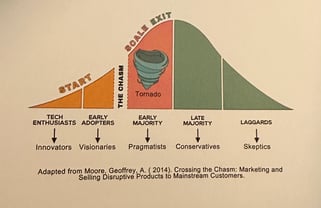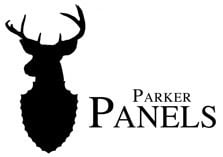DIGITAL AD #1
Media Type: Digital
Advertisement: The Sound of Mátra - Black Noise [Case Study]
Company/Brand: Fekete Zaj Festival / Mátra-Sástó / Kilohearts
Link to Ad:
https://www.youtube.com/watch?v=pbBCYx0Yysc
- Ad Description
This digital advertisement highlights the unique relationship between the Fekete Zaj Festival (also known as the Black Noise Festival) and the Mátra Mountains of Hungary. The ad creatively synthesizes the literal topography of Hungary’s highest mountain into sound using wavetable synthesis. By turning the three-dimensional surface of Mátra into an electronic music waveform, the ad merges nature with music, making it both scientifically interesting and emotionally resonant.
The emotional appeal relies on a fusion of novelty and cultural authenticity. Instead of using humor or shock, the ad provokes curiosity and awe by blending the natural environment with electronic music production. The technique evokes a strong sense of place-based identity, which is particularly powerful for niche music enthusiasts and fans of ambient or experimental sounds.
The primary objective of the ad is to:
- Promote the 2024 Fekete Zaj Festival.
- Generate intrigue through the innovative “Sound of Mátra” project.
- Increase ticket sales and brand engagement through a culturally grounded digital campaign.
These objectives are measurable (ticket sales, content downloads, social media engagement) and attainable, as this creative marketing style aligns with the interests of the festival’s niche audience.
- Target Market
The target market is niche music lovers, particularly experimental, ambient, and underground electronic music fans. It also targets individuals who value nature, sustainability, and unique cultural experiences. Most are likely between 20 and 45 years old, tech-savvy, and part of festival and subcultural music communities in Hungary and neighboring European countries.
- Desired Audience Action
The ad seeks to motivate viewers to:
- Purchase tickets for the 2024 Fekete Zaj Festival.
- Download the free Sound of Mátra content.
- Engage with the festival’s online content, share it, and possibly integrate it into their own music using the wavetable assets.
For the audience, taking these actions enhances their cultural connection, provides them with exclusive music resources, and offers them the opportunity to experience a distinctive, immersive festival in the Mátra mountains.
- Value Proposition
The value proposition is that Fekete Zaj Festival offers an experience that no other festival provides — blending music, technology, and the natural beauty of Mátra into a living soundscape. By literally turning the mountains into music, they make the festival:
- Culturally authentic (rooted in the natural environment).
- Musically unique (offering sounds no other festival can).
- Emotionally engaging (creating a strong sense of place).
Festival-goers receive a concert and a unique auditory and environmental experience, making this more than just a festival—it is an artistic and natural pilgrimage.
DIGITAL AD #2
Media Type: Digital
Advertisement: Back Market - Hack Market
Company/Brand: Back Market
Link to Ad:
https://youtu.be/J2Y66Av5Cuk?si=N9eMKxReVmIDQuot
- Ad Description
This digital ad by Back Market, a company specializing in refurbished electronics, delivers a clever, satirical critique of typical tech marketing and product launch events. The ad exposes how companies often sell consumers minor upgrades disguised as revolutionary technology through humor and exaggerated stereotypes of tech industry keynotes.
The emotional appeal centers around humor and wit, creating an instant connection with viewers who have grown cynical or fatigued by yearly tech product launches. The creative technique used is parody, making the ad stand out among standard digital tech advertisements.
The objectives of the ad are to:
- Increase awareness of the refurbished electronics market.
- Challenge consumer perceptions about buying “new” versus “refurbished.”
- Drive traffic to Back Market’s online store.
These objectives are realistic, measurable through sales, web traffic, and online engagement, and align well with the growing trend of sustainability and budget-conscious tech consumption.
- Target Market
Back Market targets tech-savvy consumers aged 18–45 who are budget-conscious, environmentally aware, and skeptical of planned obsolescence. This includes students, young professionals, and anyone who values technology but is unwilling to overpay for minor product upgrades.
- Desired Audience Action
The ad encourages viewers to:
- Consider refurbished electronics as a smarter alternative.
- Visit Back Market’s website.
- Share the ad due to its humorous and relatable content.
Viewers benefit by saving money, reducing electronic waste, and accessing high-quality refurbished devices without falling for marketing gimmicks.
- Value Proposition
Back Market offers consumers:
- Substantial savings on like-new devices.
- A sustainable alternative to buying new electronics.
- Transparency and honesty in a market often driven by hype.
The ad positions Back Market as the rational choice for savvy, practical tech consumers.
DIGITAL AD #3
Media Type: Digital
Advertisement: Puma - Go Wild Campaign
Company/Brand: Puma
Link to Ad:
https://youtu.be/LaI7Ty0UeRk?si=hOUQRGoZhm5qIc_X
- Ad Description
Puma’s “Go Wild” campaign creatively blurs the line between sport, fashion, and street culture by inviting consumers to embrace their primal, untamed nature. Through fast-paced visuals, bold imagery, and urban influences, the ad evokes energy, adrenaline, and freedom.
The emotional appeal is rooted in excitement and self-expression, tapping into the youthful desire for individuality and rebellion. The campaign avoids clichés and instead delivers an authentic, visually arresting message.
The campaign’s objectives:
- Position Puma as a trendsetter in the sports and fashion world.
- Engage younger audiences who value personal style and authenticity.
- Drive sales of Puma’s latest product line.
These goals are attainable and measurable through social engagement, online sales, and brand perception studies.
- Target Market
The target market consists primarily of young adults aged 16–30 active in streetwear, sports, and urban culture. These individuals are fashion-conscious, highly active on social media, and value brands that reflect their identity.
- Desired Audience Action
The ad invites viewers to:
- Purchase from Puma’s “Go Wild” product line.
- Share and engage with the campaign on social platforms.
- Embrace the brand as a symbol of bold, authentic self-expression.
Consumers gain not just athletic wear but a cultural statement and sense of belonging within a fashion-forward community.
- Value Proposition
Puma offers:
- Products that fuse performance with street style.
- Apparel that empowers consumers to express their individuality.
- A brand rooted in energy, confidence, and creativity.
Puma invites its audience to “Go Wild” by living unrestrained and stylishly.
DIGITAL AD #4
Media Type: Digital
Advertisement: Google - The Art Project
Company/Brand: Google
Link to Ad:
https://artsandculture.google.com
- Ad Description
Google’s “The Art Project” is a digital platform that grants users unprecedented access to some of the world’s most significant art collections. This ad showcases the platform’s functionality, offering virtual museum tours, high-resolution artwork scans, and interactive educational experiences.
Google's emotional appeal is rooted in wonder and inspiration. It has democratized access to art previously limited by geography, cost, or circumstance. Google connects people globally to cultural treasures.
The objective:
- Promote the accessibility and educational value of the Google Art Project.
- Increase user engagement with the platform.
- Align Google’s brand with innovation and culture.
The ad’s objectives are attainable and measurable through user engagement analytics and platform usage.
- Target Market
This ad is directed at:
- Students, educators, artists, and lifelong learners.
- Art enthusiasts who may not have the opportunity to visit world-class museums.
- A broad, international audience interested in cultural enrichment.
- Desired Audience Action
The ad aims to:
- Encourage viewers to explore the platform.
- Share the resource with schools, communities, or social networks.
- Inspire users to continue engaging with art and culture.
Users benefit by gaining free, global access to an ever-growing collection of art and educational tools.
- Value Proposition
Google offers:
- Free, high-quality access to global art collections.
- An intuitive, interactive learning platform.
- Cultural enrichment without barriers.
The Art Project transforms how people experience and learn about art.
DIGITAL AD #5
Media Type: Digital
Advertisement: Nikon - The Golden Billboard
Company/Brand: Nikon
Link to Ad:
https://youtu.be/PGpSMyJS6BY?si=xeJ3n1y0BGboxgUO
https://campaignsoftheworld.com/tech-innovations/innovative-marketing-campaigns-2023/
- Ad Description
Nikon’s “The Golden Billboard” campaign merges outdoor advertising with digital interactivity. The billboard serves as a fully functioning lighting system, allowing passersby to take professional-grade photos using the billboard’s lighting setup. This digital component makes photography accessible and fun for everyday people.
The emotional appeal focuses on engagement, curiosity, and creativity, inviting viewers to actively participate rather than passively observe.
The ad’s objectives:
- Showcase Nikon’s commitment to creative photography.
- Encourage people to experience Nikon products firsthand.
- Reinforce Nikon’s brand as one for both professionals and enthusiasts.
These objectives are realistic and measurable through social media shares, public participation, and brand sentiment.
- Target Market
Targeted towards:
- Amateur and professional photographers.
- Creatives and visual storytellers.
- Tech-savvy urban populations who appreciate experiential marketing.
- Desired Audience Action
The ad encourages:
- Interaction with the billboard installation.
- Sharing user-generated photos online.
- Considering Nikon products for future photography needs.
Participants benefit by learning, engaging creatively, and feeling empowered to take professional-grade photos.
- Value Proposition
Nikon provides:
- Professional-grade photography tools accessible to all.
- Creative experiences that inspire confidence in photography.
- A memorable, shareable brand interaction.








